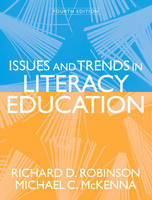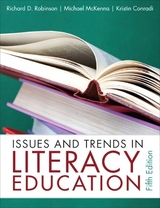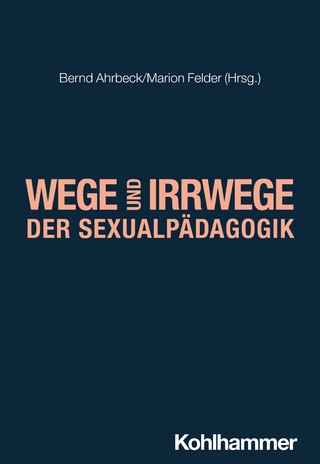
Issues and Trends in Literacy Education
Pearson (Verlag)
978-0-205-52031-2 (ISBN)
- Titel erscheint in neuer Auflage
- Artikel merken
A Letter to Students from the Authors
Dear Reader,
The authors of this literacy education textbook welcome you to the study of this important aspect of instruction. You are probably quite aware of the many current controversial topics in literacy such as assessment, the use of technology, and approaches to the teaching of reading skills. This new edition of Issues and Trends in Literacy Education was organized around a number of the most critical questions in the current field. Articles in each of these areas were selected primarily on the basis of providing you, the reader, with the latest information as well as varying opinions on a wide variety of literacy topics.
One of the primary goals of this book is for you to use these readings as a “springboard” for further investigation in topics that interest you related to effective literacy instruction. Each of the chapters includes a selection of related readings for additional study in a particular area of reading education. These can be used for in-depth study as well as a basis for personal research and writing of related class papers and presentations.
The field of literacy education is a rapidly expanding and changing area in education. We hope you find the materials in this book to be both challenging and interest as you continue your study of this field.
Thank you,
Dick Robinson
Mike McKenna
ISSUES AND TRENDS IN LITERACY EDUCATION Fourth Edition
CONTENTS CHAPTER 1 Word Recognition
Phonics
Timothy Shanahan
Readers, Instruction, and the NRP
G. Pat Wilson, Prisca Martens, Poonam Arya, & Bess Altwerger
Research on Reading: A Cautionary Tale
Gregory Camilli & Paula Wolfe
CHAPTER 2 Fluency
Creating Fluent Readers
Timothy Rasinski
Developing Fluency With Repeated Readings
William J. Therrien & Richard M. Kubina, Jr.
Reading Fluency Assessment and Instruction: What, Why, and How?
Roxanne F. Hudson, Holly B. Lane, & Paige C. Pullen
CHAPTER 3 Comprehension
Defining Comprehension
RAND Study Group
“Oh, Excellent, Excellent Question!”: Developmental Differences and Comprehension Acquisition
Laura B. Smolkin & Carol A. Donovan
The Sweet Work of Reading
Andie Cunningham & Ruth Shagoury
Learning From What Doesn’t Work
Gary Ivey & Douglas Fisher
CHAPTER 4 Adolescent Literacy
Fostering Adolescent Literacy Marlene Darwin & Steve Fleischman
No Child Left Behind: What it Means for U. S. Adolescents and What We Can Do About It
Mark W. Conley & Kathleen A. Hinchman
Implementing the No Child Left Behind Act: Using Student Engagement to Improve Adolescent Literacy
North Central Regional Educational Laboratory
At Play in Fields of Ideas Andrew Schofield & Theresa Rogers
CHAPTER 5 Multicultural Literacy Education
Increasing Reading Achievement of Students From Culturally and Linguistically Diverse Backgrounds
Michelle McCollin & Doris O’Shea
Affirming Identity in Multilingual Classrooms
Jim Cummins, Vicki Bismilla, Patricia Chow, Sarah Cohen, Frances Giampapa, Lisa Leoni, Perminder Sandhu, & Padma Sastri
Implications of No Child Left Behind on Family Literacy in A Multicultural Community
ScottN. Forest
Multicultural Literature and Discussion as Mirror and Window?
Jocelyn Glazier & Jung-A Seo
CHAPTER 6 Assessment-Driven Instruction
Toward the Peaceful Coexistence of Test Developers, Policymakers, and Teachers in an Era of Accountability
Marcia A. Invernizzi, Timothy J. Landrum, Jennifer L. Howell, & Heather P. Warley
How Well Does Assessment Inform Our Reading Instruction
Michael C. McKenna & Sharon Walpole
CHAPTER 7 Coaching
Coaching in Context: Crafting a Site-Based Staff Development System
Sharon Walpole
Literacy Coaching: Coming out of the Corner
Marsha Riddle Buly, Tracy Coskie, LeAnne Robinson, & Kathy Egawa
CHAPTER 8 Technology
Multiple Versions of Multimedia Literacy: Emerging Areas of Synthesis
Renee Hobbs
Digitally Innovative Teaching: Effective Uses of Technology in Literacy Instruction
Michael C. McKenna, Linda D. Labbo, David Reinking, & Tricia A. Zucker
CHAPTER 9 Writing
Issues and Trends in Writing
Michael Moore
Technology and Writing
Karen Bromley
| Erscheint lt. Verlag | 16.7.2007 |
|---|---|
| Sprache | englisch |
| Maße | 233 x 180 mm |
| Gewicht | 420 g |
| Themenwelt | Schulbuch / Wörterbuch |
| Sozialwissenschaften ► Pädagogik | |
| ISBN-10 | 0-205-52031-6 / 0205520316 |
| ISBN-13 | 978-0-205-52031-2 / 9780205520312 |
| Zustand | Neuware |
| Informationen gemäß Produktsicherheitsverordnung (GPSR) | |
| Haben Sie eine Frage zum Produkt? |
aus dem Bereich



